From December until February, the Himalayas of Nepal get a dusting of snow, making you wonder if trekking is even possible. Well, guess what? It is.
While the higher altitudes get snowy, many trekking routes stay snow-free or have less snow on the ground. So winter trekking is doable. Despite the cold, the trails provide a unique trekking experience that is entirely different from what you see in other seasons.
A less crowded route with a sense of solitude and serenity is the primary benefit. Besides that, complete white landscapes, frozen lakes, and spectacular snow mountains showcase the beauty of nature differently. Not only that, winter in the mountains creates a picturesque setting, which is every photographer’s dream.
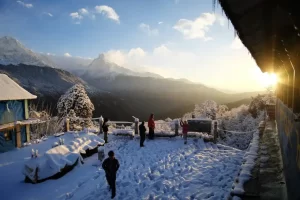
View from the guesthouse in Annapurna, Nepal
Although trekking in winter can be physically challenging because of snow and adverse weather conditions, it also contributes to mental toughness and overall fitness. This is a rewarding experience that tests your limits, unveiling the best scenery in the mountains.
Ready to take on the challenging cold to see Nepal differently? Here are the 15 best winter treks.
Table of Contents
- 15 Best Snow Treks in Nepal
- Ghorepani Poon Hill Trek
- Mount Everest Panorama View Trek
- Mardi Himal Trek
- Helambu Trek
- Chisapani Nagarkot Hiking
- Khopra Ridge Trek
- Annapurna Family Hike
- Langtang Valley Trekking
- Pikey Peak Trek
- Annapurna Panorama Trek
- Jomsom to Muktinath Trek
- Short Annapurna Base Camp Trek
- Gokyo Lakes Trek
- Annapurna Base Camp Trek
- Everest Base Camp Trek
- Winter Months in Nepal
- Benefits of Winter trekking in Nepal
- Best Snow Trekking Routes for Winter in Nepal
- How difficult is trekking in Nepal in the winter?
- Winter Trekking Tips
- Comprehensive Packing List for Winter Trekking in Nepal
- Why is Heaven Himalaya the right choice for every winter trek?
- Final Words,
- Winter Trekking FAQs
15 Best Snow Treks in Nepal
Aiming to provide the best winter trekking experience for you, we have listed low-altitude treks where there’s less snow on the ground. Daytime temperatures on these routes are just right, but nights can get chilly, dropping to around 0 degrees Celsius.
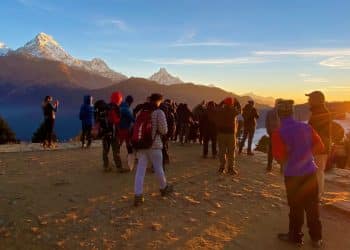
Ghorepani Poon Hill Trek
The Ghorepani Poon Hill Trek Package is a short yet exciting trekking tour to Nepal’s Annapurna region.
More Details
Mount Everest Panorama View Trek
The Everest View Trek is an ideal journey for anyone who is seeking a short and easy trek in the Everest region of Nepal. With this trek, one can appreciate the glory of Mt. Everest in just seven days.
More Details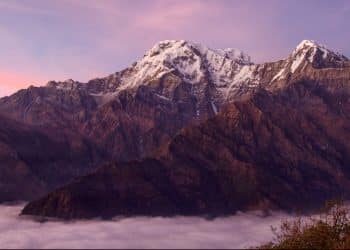
Mardi Himal Trek
The Mardi Himal Trek is a short and jovial hiking trip in the Annapurna region of Nepal.
More Details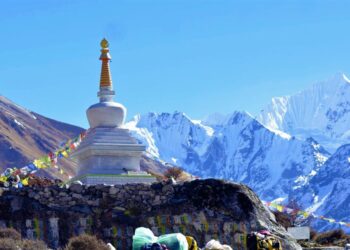
Helambu Trek
The Helambu Trek is an exceptional opportunity to immerse in the unspoiled beauty of high mountainous terrain in Nepal’s Langtang region.
More Details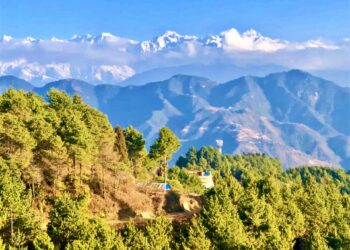
Chisapani Nagarkot Hiking
Chisapani-Nagarkot Hiking offers one of the best experiences of natural beauty and adventure within a very short trekking route. Nature walks well
More Details
Khopra Ridge Trek
If you are looking forward to a new travel choice in the Annapurna region of Nepal? Then, Khopra Ridge Trek would be
More Details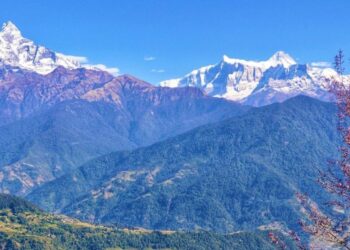
Annapurna Family Hike
Annapurna Family Hike is all about creating some memories in the Annapurna region of Nepal with your family. It’s an opportunity to
More Details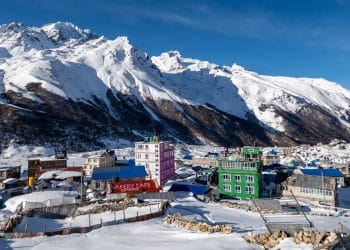
Langtang Valley Trekking
Interact with people from a unique remote culture close to nature in Nepal with a Langtang Valley Trek.
More Details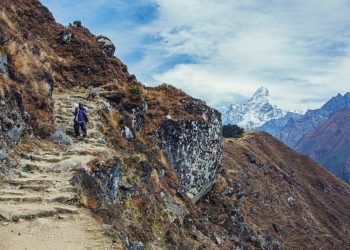
Pikey Peak Trek
Pikey Peak Trek is quickly becoming one of the most popular routes in the Everest Region. The trekking trails are very easy
More Details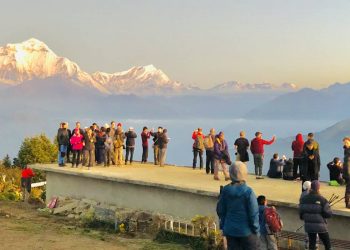
Annapurna Panorama Trek
The Annapurna Panorama Trek is a journey to some impressive landscapes in the Annapurna region of Nepal. The all-inclusive 10 days of
More Details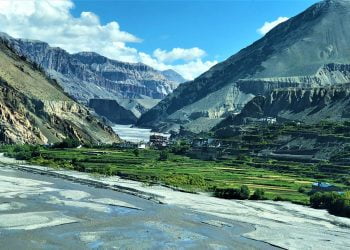
Jomsom to Muktinath Trek
Jomsom to Muktinath Trek is one of the spiritual treks amidst the glory of mountains and mountainous landscapes. The trek takes you
More Details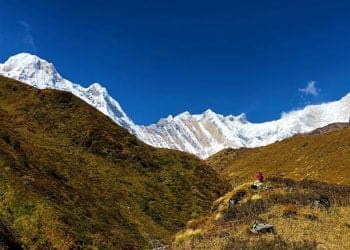
Short Annapurna Base Camp Trek
Annapurna Base Camp Short Trek is a customized trek designed after a tremendous demand from our client’s side.
More Details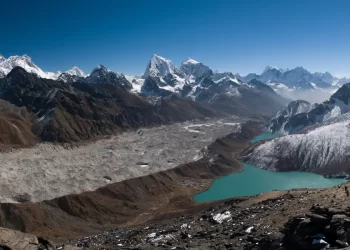
Gokyo Lakes Trek
The Everest Gokyo Lake Trip is a short Everest trekking package that takes you to the highest freshwater system in the world: Gokyo Lake, Gokyo Ri, and Valley.
More Details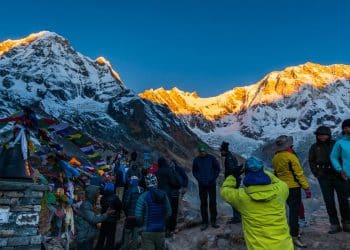
Annapurna Base Camp Trek
The Annapurna Base Camp Trek is a hiking trip package that takes you close to the Annapurna massif in Nepal.
More Details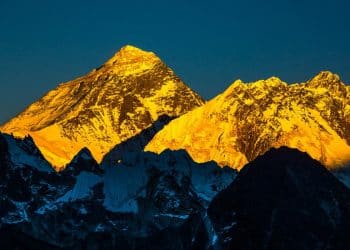
Everest Base Camp Trek
The trip to Everest Base Camp is more than just a mountain trek; it is a journey of self-discovery through the heavenly places in the Himalayas.
More DetailsWinter Months in Nepal
In Nepal, December, January, and February are designated winter months. During this period, the country experiences cooler temperatures and distinct weather patterns.
In the Terai region, temperatures are milder, ranging from 15°C to 20°C.
In the Kathmandu valley, daytime temperatures are warm, varying from 10°C to 18°C, with colder nights often dropping below freezing. However, trekking in the Himalayas brings the real deal. Sub-zero temperatures and heavy snowfall turn surrounding peaks in the Himalayas into a snowy wonder.
Yet, even in winter, Nepal is a land of clear skies, dry weather, and stunning panoramic views of the Himalayan peaks.
While lowland areas may experience occasional fog and dew, overall winter brings low precipitation. And here’s the gem: winter is a unique time for any trekking adventure, offering a unique canvas of snow-covered landscapes.
But wait, there’s more!
Winter transforms cultural cities like Kathmandu and Pokhara. With fewer crowds, you can dive deep into the rich cultural heritage of Nepal in a more personal way.
Weather Pattern, Temperature, and Chances of Snowfall in Winter
Benefits of Winter trekking in Nepal
Trekking during the winter comes with several advantages that make it a unique and appealing experience. Here are some compelling reasons why you should not neglect winter for your trekking adventure in Nepal.
Abundance of snow
Winter blankets the mountains and trails with lots of snow, creating a picturesque landscape. The snow-covered trails add a magical touch to the trekking experience.

Frozen lake in Tilicho
There are no crowds.
Unlike the peak seasons, winter sees significantly fewer trekkers. Popular regions like Everest Base Camp (EBC), Annapurna Base Camp (ABC), and Langtang are much quieter. Thus, you can enjoy the tranquility and solitude of the trails.
Quiet villages along the trail
The winter tours provide an opportunity to explore quaint villages along the trail. With very few trekkers on the trail, you get an immersive experience of local culture.
Closer connection with nature
The reduced number of trekkers enables a closer connection with nature. The peaceful ambiance amidst nature allows you to observe and appreciate the natural beauty of the landscape with undivided attention.
Everything is cheaper
Winter also brings cost advantages. Accommodation and meals on the trek are often available at discounted rates. This makes winter trekking a more budget-friendly option compared to the peak seasons.
Stable weather conditions
Popular trekking trails experience stable weather conditions during the winter, with less rainfall and clearer days. While temperatures may be colder, the stable weather ensures better visibility and clearer views of majestic mountains.
Endangered Wildlife Encounters
Because of the cold and snow, few endangered species, such as snow leopards, are traceable during the winter. Their footprints are visible in the snow.
Animals living at high altitudes come down to lower regions in search of food, which increases the chance of wildlife encounters.
Winter Treks vs Fall and Spring Season Trek
While spring, summer, and autumn treks in Nepal have their allure, embarking on the winter trek is a choice that promises a distinctive and enchanting adventure.
Embrace the challenges of the colder months and you will get an outstanding experience that stands out from the rest. Here are some distinctive features you will notice if you opt for winter treks over other-season treks in Nepal:
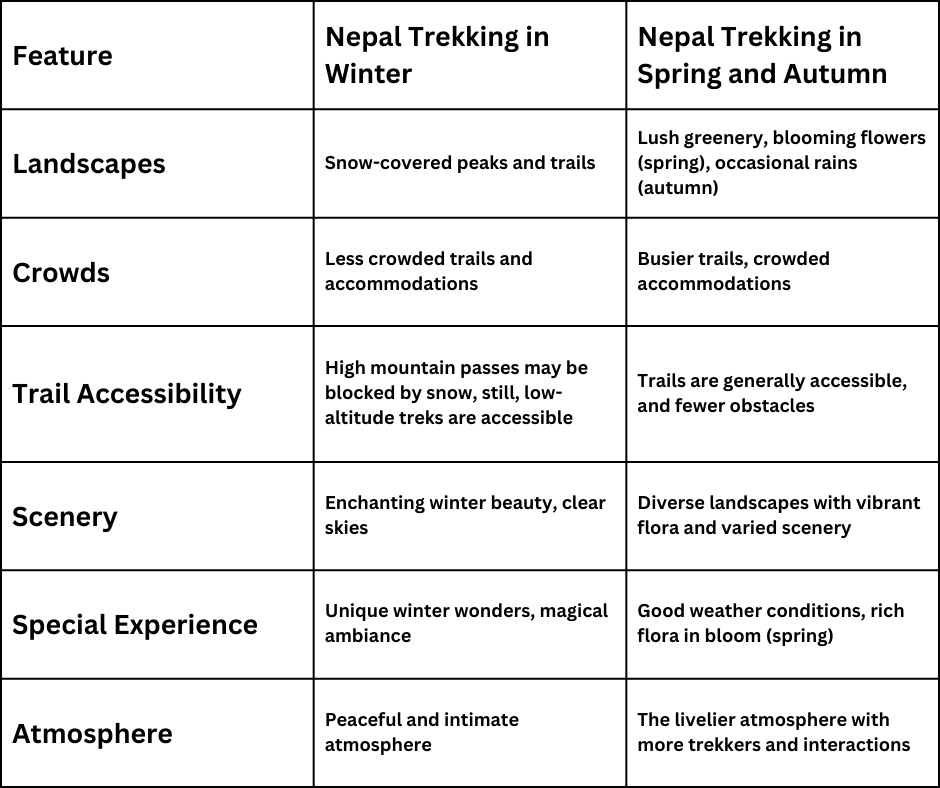
Nepal Trekking in Winter, Spring and Autumn Comparisons
Best Snow Trekking Routes for Winter in Nepal
Trekking in the winter promises a unique and peaceful adventure with snowy landscapes, cultural exploration, and cost-effective options.
Below, discover popular winter treks in Nepal, each with its major highlights and reasons why they are particularly ideal during the winter months.
Everest View Trek
Everest View Trek is one of the short and easy trekking trails in the Everest region of Nepal. This trek offers stunning mountain vistas without the difficulty of a challenging trek.
During winter, the region becomes a snowy wonderland, exchanging its natural beauty. The trek begins with a thrilling flight to Lukla and takes you through enchanting Sherpa settlements, including Namche Bazaar.
The major highlight of this trek is hiking to Hotel Everest View for the best sunrise view against a backdrop of crisp blue skies and snow-capped peaks.
The Everest View Trek offers scenic sights of high mountains like Everest, Lhotse, Thamserku, Ama Dablam, and much more.
If you have experienced the bustling trails of the Everest region during peak trekking seasons, you will appreciate the difference that winter brings.
Winter treks offer a tranquil escape from the hustle and bustle of busier trekking seasons. You’ll get a chance to connect with the local people and enjoy nature at your own pace.
| Trek Region | Khumbu Region |
| Trek Duration | 7 Days |
| Trek Difficulty | Moderate |
| Elevation Gain | 3,960 meters, Hotel Everest View |
| Starting/Ending Point | Lukla |
| Highlights | Sherpa culture and lifestyle, sunrise view with 360° panoramic view of Everest Himalayan range from Hotel Everest View |
| Average Temperatures | -2°C to 10°C |
Ghorepani Poon Hill Trek
The Ghorepani Poon Hill Trek is one of the most famous short family treks in Nepal. It is an easy trek suitable for all ages and can be done throughout the year.
The trek leads to Poon Hill, a viewpoint at 3,210 meters altitude in the Annapurna region. During winter, the sunrise from Poon Hill is particularly breathtaking, as the snow-capped peaks glow golden in the first light.
The trail, usually lush with greenery, becomes a peaceful snow-covered forest during the winter, offering a serene trekking experience. What makes it even better in winter is the smaller number of trekkers, allowing for a tranquil connection with nature.
| Trek Region | Annapurna Region |
| Trek Duration | 10 Days |
| Trek Difficulty | Easy |
| Elevation Gain | 3,210 meters, Poon Hill |
| Starting.Ending Point | Nayapul/Ghandruk |
| Highlights | Pokhara, Ghorepani Village, 360-degree panoramic vistas of mountains from Poon Hill, and hot springs at Jhinu Danda |
| Average Temperatures | -2°C to 10°C |
Mardi Himal Trek
Mardi Himal Trek is another beautiful short trek with rich cultural experiences. The trail weaves through terraced fields, bamboo forests, and charming Magar and Gurung villages.
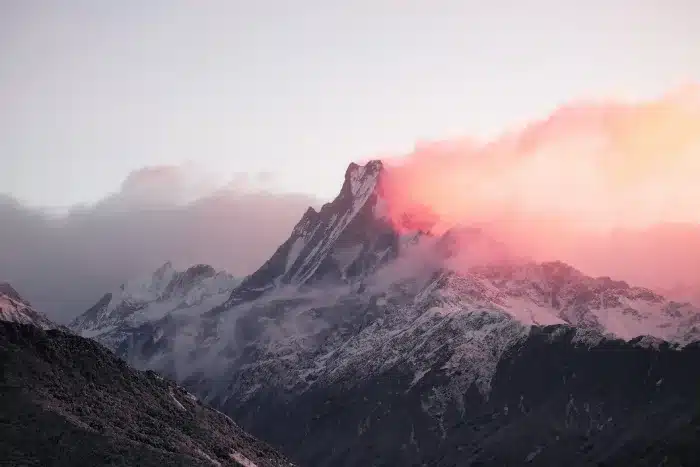
Mt. fishtail
The highlight of this trek is reaching the base camp of Mardi Himal at sunrise, where you’ll witness a panorama of the Annapurna and Dhaulagiri ranges. Bathed in the soft, warm hues of the early morning sun, it’s a sight to behold.
Although Mardi Himal sits next to popular Annapurna Base Camp trails, it offers a different experience. During winter, you can witness the close-up view of snow-covered peaks, including the Annapurna range, Macchapuchhre, Dhaulagiri, etc.
Notably, the majority of this trek route lies at altitudes below 4,000 meters. Thus, this trek option is excellent due to the dry and warm weather conditions. The highest point of the trek lies in the Mardi Himal Base Camp at 4,500 meters above sea level.
| Trek Region | Annapurna Region |
| Trek Duration | 10 Days |
| Trek Difficulty | Moderate |
| Elevation Gain | 4,500 meters, Mardi Himal Base Camp |
| Starting/Ending Point | Phedi/Lumre |
| Highlights | Off-the-beaten trekking trails, cascading waterfalls, streams, rivers, lush green forests, and Gurung culture |
| Average Temperatures | -3°C to 15°C |
Dhampus Sarangkot Trek
Dhampus and Sarangkot Treks are some of the most scenic short treks located just beyond the beautiful Pokhara Valley. This trek is perfect for those who want to soak up the diverse, unique culture and beauty of the Annapurna Himalayas.
In a short time, you can immerse yourself in the charming culture and natural beauty of the Annapurna region. You’ll have the opportunity to explore middle-hill villages like Dhampus, engage with local villagers, and embrace the rich Gurung culture that defines the area.
Throughout the journey, you’ll relish the awe-inspiring mountain vistas, including iconic peaks such as Machhapuchhre, Annapurna I, and Dhaulagiri, among others. Another highlight is witnessing the mesmerizing sunrise from Sarangkot Hill, which is a truly unforgettable experience.
This is a perfect trek for families and trekkers of all ages can comfortably undertake it. Being a low-altitude trek, there is no risk of encountering snowfall. With the right trekking gear, you can easily cope with the colder temperatures, ensuring a safe and enjoyable journey for everyone.
| Trek Region | Annapurna Region |
| Trek Duration | 3 Days |
| Trek Difficulty | Easy |
| Elevation Gain | 2,150 meters, Australian Base Camp |
| Starting/Ending Point | Phedi/ Pokhara |
| Highlights | Dhampus Village, Australian Base Camp, Sarangkot Hill Point, Gurung culture |
| Average Temperatures | -2°C to 15°C |
Khumai Danda Trek
Khumai Danda Trek is a relatively short, easy, and newly discovered trekking trail in Nepal. Located north of Pokhara, it gained popularity for being less crowded compared to other well-known trails.
The trek, perfect for all ages, takes around 3 to 4 days from Pokhara and offers exquisite sunrise views of the Machhapuchhre, Annapurna, and Dhaulagiri mountain ranges. The mountain beauty becomes even more enchanting during the winter, creating a mesmerizing backdrop against the clear, crisp winter sky.
Situated at the base of the south face of Machhapuchhre, Khumai Danda provides a peaceful experience away from the busier Mardi Himal and Poon Hill routes. The trek includes quiet trails, beautiful scenery, and visits to ethnic villages like Saripakha, Hile Kharka, and Mirsha.
During the winter, the trek becomes even more special, with snow adding a magical touch to the landscape. The highest trekking point is Korchan Danda at 3,700 m, offering astounding sights of sunrise and the majestic Himalayan peaks.
| Trek Region | Annapurna Region |
| Trek Duration | 4 Days |
| Trek Difficulty | Moderate |
| Elevation Gain | 3,700 meters, Korchan Danda |
| Starting/ EndingPoint | Hemja/ Ghachowk |
| Highlights | Panoramic sights of Mt. Machhapuchhre, Annapurna, and Mardi Himal, Unspoiled trekking trails, sunrise and sunset views from Khumai Danda, Korchan Hill |
| Average Temperatures | -3°C to 15°C |
Langtang Valley Trek
The Langtang Valley Trek is one of the best treks in Nepal. The winter season brings a serene calmness to the Langtang trail.
Starting from Langtang National Park and meandering through the pristine Langtang valley, the trek endpoint is Kyanjin Gompa at 3,800 meters. This village offers several additional trips, including visiting the glacial valley of Langshisha Kharka or Nepal’s oldest Yak cheese factory.
The Langtang trekking trail, once vibrant with lush greenery, is now beautifully covered with a blanket of snow, creating a serene atmosphere as you trek through the undisturbed paths.
Further, there is an option for a side hike to mesmerizing viewpoints like Kyanjin Ri (4,773 m) and Tserko Ri Peak (4,985 m). However, it’s worth noting that the ideal time to climb these peaks is autumn and spring.
Winter poses a bit more of a challenge, demanding proper gear and equipment. Nevertheless, the panoramic views after taking these challenges reward you with unparalleled beauty.
Winter makes the Langtang region incredibly beautiful and peaceful, providing a perfect escape for those seeking a quieter and more reflective trekking experience.
| Trek Region | Langtang Region |
| Trek Duration | 11 Days |
| Trek Difficulty | Easy, Moderate |
| Elevation Gain | 3,800 meters, Kyanjin Gompa |
| Starting/Ending Point | Syabru Besi |
| Highlights | Kyanjin Gompa, Tamang Culture, Langtang Valley, Kyanjin Ri, Majestic view of Langtang Lirung, Ganesh Himal, Langtang Himal |
| Average Temperatures | -2°C to 10°C |
Everest Base Camp Trek
The Everest Base Camp trek is usually popular in peak seasons, but it’s equally alluring and less crowded in winter (December to February). During this time, you will get a more peaceful and intimate experience of the Everest region.
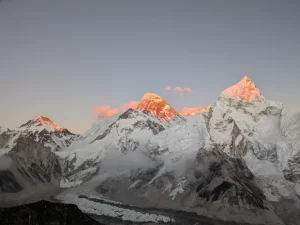
View of Mt. Everest from Kala Patthar during winter morning
The main highlight of this trek is hiking to the base of Mt. Everest and the viewpoint of Kala Patthar. The sunrise from Kala Patthar in winter is especially captivating. The snow-covered peaks, along with the first light of day, create an enchanting spectacle. The crisp, cold air in winter ensures clear skies, offering unobstructed views of Mount Everest.
The winter landscape turns the region into a marvelous winter wonderland with snow-clad mountains. Thus, snowy trails add some challenges, but they bring unique beauty to the trek.
Furthermore, you’ll also have a chance to experience the warm hospitality and culture of the Sherpa people, as the trails are less crowded during the winter months.
| Trek Region | Khumbu Region |
| Trek Duration | 14 Days |
| Trek Difficulty | Moderate |
| Elevation Gain | 5,550 meters |
| Starting/Ending Point | Lukla |
| Highlights | Sherpa culture and lifestyle, sunrise with 360 panoramic views of Everest Himalayan range from Kala Patthar, Everest Base Camp |
| Average Temperatures | -5°C to 15°C |
Annapurna Base Camp Trek
Another alluring winter trek in Nepal is the Annapurna Base Camp (ABC) trek. This iconic trail takes you through rhododendron forests and charming Gurung villages, ultimately leading to the base camp of the majestic Annapurna massif.
The major highlight of this winter trek is undoubtedly the breathtaking sunrise view over the snow-covered peaks from the ABC, which included Annapurna South, Annapurna I, and Machhapuchhre, also known as Fishtail Mountain.
Winter transforms the Annapurna region into a winter wonderland. The trails and forests are blanketed in snow, creating a magical and serene atmosphere.
Unlike the peak trekking season, you’ll encounter significantly fewer trekkers on the trail during the winter. You’ll get a more peaceful and intimate experience with the mountains.
Winter is a great time to be in the base camp and marvel at the enchanting beauty of the starry skies above, with the majestic mountains as your backdrop.
| Trek Region | Annapurna Region |
| Trek Duration | 15 Days |
| Trek Difficulty | Moderate |
| Elevation Gain | 4,130 meters, Annapurna Base Camp |
| Starting/ EndingPoint | Tikhedhunga/Jhinu Danda |
| Highlights | Annapurna Base Camp, Machhapuchhre Base Camp, Sunrise from Poon Hill, Hot Spring at Jhinu Danda |
| Average Temperatures | 0°C to 15°C |
Pikey Peak Trek
The Pikey Peak Trek is an excellent winter trekking destination that lies close to the capital city. This adventure leads you to the pristine Peaky Peak viewpoint, located at 4,065m above sea level.
Many say that the view of Mount Everest from Pikey Peak is one of the best in Nepal. Even legendary mountaineer Sir Edmund Hillary considered it the finest viewpoint. Standing at the top of Peaky Peak provides a breathtaking and unique perspective of the world’s highest peak.
Trekking to Pikey Peak provides an off-beaten-path experience through the lower Everest region. It is a relatively newly opened route that lies midway between Everest Base Camp and.
This less-traveled route can be completed within a couple of days while enjoying the stunning landscape of the Solukhumbu region. The Pikey Peak trek spans around 55 kilometers and trekkers typically spend an average of 5 hours walking each day.
During winter, this region receives minimum rainfall and snowfall, ensuring a hassle-free connection with nature. As you traverse the trail, you’ll get the chance to explore the lower trail of the Everest region.
During the trek, you can visit numerous Buddhist monasteries, gompas, and stupas. Along the journey, you’ll be treated to breathtaking vistas of the Everest range, Numbur Himal, Dorje Lakpa, Gaurishankar, and Makalu.
Even for time-constrained travelers seeking an up-close view of Mt. Everest, the Pikey Peak Trek remains an attractive option during the winter months, including December, January, and February.
| Trek Region | Solukhumbu Region |
| Trek Duration | 9 Days |
| Trek Difficulty | Moderate |
| Elevation Gain | 4,065 meters, peak |
| Starting/Ending Point | Dhap Bazaar or Phaplu |
| Highlights | Sherpa culture and lifestyle, sunrise view with 360 panoramic view of Everest Himalayan range from Pikey Peak |
| Average Temperature | -2°C to 10°C |
Khopra Ridge Trek
Khopra Ridge Trek lies in the renowned Annapurna region, yet it remains a relatively newly opened trail, preserving its untouched nature. The route will take you through several ethnic villages and showcase remarkable landscapes, offering an authentic and unspoiled trekking experience.
Winter is the ideal season for this trek. The weather conditions are stable, and temperatures are relatively mild compared to other high-altitude Annapurna trekking routes.
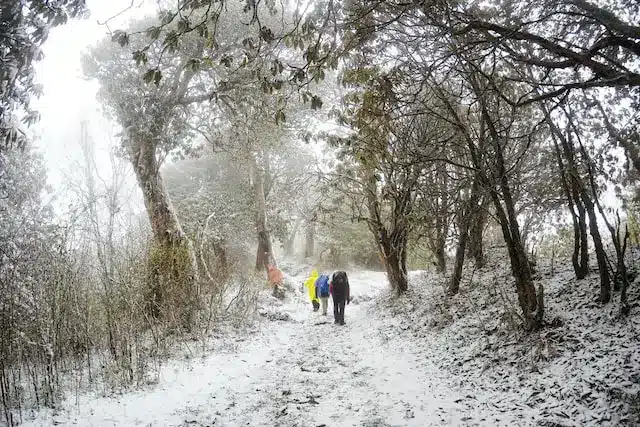
Snow in the hiking trail in Khopra, Annapurna
What sets this trek apart is the tranquility it provides, even during winter, when you’ll likely encounter very few, if any, fellow trekkers. This solitude during the trek offers a perfect opportunity to savor the peace and create an intimate connection with nature and the surrounding mountains.
From the top of Khopra Danda, you can appreciate the amazing panorama of several mighty peaks, including the Macchapuchhre, Nilgiri, Hiunchuli, and Annapurna ranges. In addition, the trek includes an excursion to the high alpine lake of Khayar, at 4,827 meters.
| Trek Region | Annapurna Region |
| Trek Duration | 13 Days |
| Trek Difficulty | Moderate |
| Elevation Gain | 4,827 meters, Khayar Lake |
| Starting/Ending Point | Nayapul |
| Highlights | 360-degree panoramic view of the Annapurna Himalayan range from Khopra Ridge, Sunrise and Sunset from Khopra Ridge, Khayar Lake, Gurung and Magar Culture |
| Average Temperatures | 0°C to 10°C |
Helambu Trek
The Helambu Trek is a short and easy journey that takes you to the culturally and naturally rich Helambu Valley in Nepal.
Starting from Laurebina La Pass and stretching to Melamchi Valley, the Helambu region reaches its highest point at just 3,500 meters. This culturally diverse trek treats you to the astonishing sights of Ganesh Himal, Langtang Lirung, and Gaurishankar.
The trek begins with a hike through Shivapuri National Park to Chispani. During the trek, you’ll explore several Tibetan-style Buddhist monasteries, shrines, and stupas while passing through several Tamang and Sherpa villages.
The Helambu trekking trails are pleasantly less crowded, allowing nature to unfold its beauty without interruption. In winter, the landscape transforms into a snowy blanket, adding an extra touch of enchantment to the trek.
The Helmabu trek is not just a visual delight but also a cultural immersion. You’ll gain valuable insights into the authentic lifestyles of the Hyolmo, Tibetan, Tamang, and Sherpa communities of Helambu Valley.
| Trek Region | Langtang Region |
| Trek Duration | 9 Days |
| Trek Difficulty | Easy |
| Elevation Gain | 3,690 meters, Tharepati |
| Starting/Ending Point | Sundarijal/Melamchi Bazaar |
| Highlights | Langtang National Park, Majestic panorama of Langtang Range, Langtang village, Kyanjin Gompa, Kyanjin Ri Peak, and Scared Gosaikunda Lake |
| Average Temperatures | 4°C to 15°C |
Langtang Gosaikunda Trek
The Langtang Gosaikunda Trek is another adventurous trek that you can enjoy in winter. The trek takes you through the Langtang National Park, which is known for its rich biodiversity.
This trek allows you to enjoy the majestic vistas of Langtang Lirung, Dorje Lakpa, Yansa Tsenji, Naya Kanga, Kimsung, etc. Moreover, you’ll have the pleasure of gazing at staggering glaciers, including the magnificent Lirung and Kim Sung glaciers.
A notable highlight of the trek is your visit to the sacred lake of Gosaikunda. In the winter, this lake is frozen, showcasing a remarkable natural wonder that’s worth experiencing.
In January, there may be occasional light snowfall in the trek region, but it generally doesn’t interrupt your trek. On the contrary, the sight of frozen lakes, forests, snow-clad hills, and gentle snowfall creates a magical and enchanting landscape that adds a special charm to your trekking journey.
| Trek Region | Langtang Region |
| Trek Duration | 14 Days |
| Trek Difficulty | Moderate |
| Elevation Gain | 4, 380 meters, Gosaikunda Lake |
| Starting/Ending Point | Syabrubesi/ Dhunche |
| Highlights | Langtang National Park, Majestic view of Langtang Range, Langtang village, Kyanjin Gompa, Kyanjin Ri Peak, and Scared Gosaikunda Lake |
| Average Temperatures | 4°C to 10°C |
Nagarkot Chisapani Trek
Chisapani Nagarkot Trek is the closest hiking trail to the capital city, Kathmandu. Starting with a short drive to Sundarijal, the hike commences in the tranquil Shivapuri National Park.
Situated just a few miles northeast of Kathmandu, both Chispani and Nagarkot offer the best sweeping mountain vistas. Some of them include Langtang, Dorje Lakpa, Gaurishankar, and many more.
Furthermore, the trek route goes through the densely forested areas of Shivapuri National Park, providing opportunities to spot various bird species.
Chispani village, as the name suggests, always has cold temperatures. While snowfall is rare in winter, temperatures in both Chispani and Nagarkot can drop to around 0°C, so you need to pack appropriate clothing for the journey.
| Trek Region | Solukhumbu Region |
| Trek Duration | 3 Days |
| Trek Difficulty | Easy |
| Elevation Gain | 2,300 meters, Chisapani Village |
| Starting/Ending Point | Sundarijal/Nagarkot |
| Highlights | Sunrise view from Nagarkot, Langtang Himalayan Range, Tamang culture and lifestyle, Shivapuri National Park, Chispani village |
| Average Temperatures | 0°C to 15°C |
Gokyo Lake Trek
The Gokyo Lake Trek is another amazing winter trek in Nepal. It is possible during the winter season with proper preparation.
The higher trails close to Gokyo Valley might be covered in snow. So you need the proper equipment to move on the snow-covered trails and clothing gear to deal with the freezing temperatures that drop below minus during the night and early morning.
The white landscape adds a magical touch to the Everest Gokyo Lake trekking experience, making every step a picturesque journey. The major highlights of the Gokyo Lake trek are the pristine Gokyo Valley, the beautiful Gokyo Lake, the magnificent sights of the Everest range, and the Ngozumpa Glaciers, the largest in Nepal’s Himalayas.
The trek commences with a short yet exhilarating flight to Lukla from Kathmandu. Following the standard Everest Base Camp (EBC) trail until Namche Bazaar, the route then diverges to Gokyo Valley through Dole and Machhermo.
The sight of Gokyo Lake is truly postcard-worthy, with winter being an ideal time for gazing. Lower humidity enhances visibility, and the longer nights allow for a magical scene of the mountain from Gokyo Valley.
| Trek Region | Khumbu Region |
| Trek Duration | 12 Days |
| Trek Difficulty | Moderate |
| Elevation Gain | 4,790 meters, Gokyo Valley |
| Starting/Ending Point | Lukla |
| Highlights | Thrilling flight to Kathmandu to Lukla, Gokyo Lake, Gokyo Valley, Amazing mountain views of Everest, Ama Dablam, Cho Oyu, Makalu, Impressive sight of Ngozumpa Glacier |
| Average Temperatures | -10°C to 15°C |
Jomsom Muktinath Trek
Jomsom Muktinath Trek is an exciting tour in the Annapurna and high alpine lakes of Khayar, Nepal. The journey starts in the scenic Jomsom Valley, located on the banks of the Kali Gandaki River. During this trek, you’ll explore cultural villages like Kagbeni, Marpha, Muktinath, and Ghorepani.
The major highlight of the trek is visiting a sacred Hindu and Buddhist pilgrimage site, Muktinath Temple, at the base of Thorong La Pass (3,800 meters). This high mountain pass is an integral part of the famous Annapurna Circuit Trek, which connects the beautiful Manang and Mustang districts in Nepal.
If you want to witness the Muktinath temple covered in snow, then winter is the perfect time to visit. The snow-covered peaks and trails enhance the beauty of the trekking route.
Furthermore, the winter trek provides a more solitary experience, as the trail is less frequented by trekkers. Accommodation in tea houses along the route is also more readily available.
| Trek Region | Mustang and Annapurna Region |
| Trek Duration | 14 Days |
| Trek Difficulty | Moderate |
| Elevation Gain | 3,710 meters, Muktinath Temple |
| Starting/Ending Point | Jomsom/Nayapul |
| Highlights | Traditional Thakali and Gurung villages (Jomsom, Kagbeni, Marpha, and Ghorepani), scary Muktinath temple, stunning sunrise panoramas over Annapurna and Dhaulagiri peaks from Poonhill, the beautiful city of Lakes, and Pokhara |
| Average Temperatures | -9°C to 0°C |
How difficult is trekking in Nepal in the winter?
Although winter trekking is fun, it does present several challenges. Here are few:
Cold weather
The winter in Nepal brings freezing temperatures, especially at higher altitudes. You’ll need to be well-prepared with appropriate cold-weather gear to stay warm and safe.
Snow and ice
Many trekking routes in Nepal can be covered in snow and ice during the winter. This can make trials slippery and require additional caution and specialized equipment like gaiters, crampons, trekking poles, etc.
Shorter days
Winter days are shorter, which means you have less daylight for trekking. Planning your daily itinerary accordingly is crucial to ensuring you reach your destinations before darkness falls.
Altitude challenges
Popular trekking destinations in Nepal often involve high altitudes. Dealing with altitude-related challenges can be more demanding in the winter due to the cold and reduced services at higher elevations.
Limited teahouses along the trail
Some tea houses along the trekking routes may be closed during the winter due to lower tourist traffic. Villages at high altitudes are almost empty as the villagers move to lower areas to escape the harsh Himalayan cold. This limits accommodation and dining options, making advanced planning essential.
Limited access trails
Some trekking routes in remote areas, including high mountain passes, may be closed during the winter due to heavy snowfall, which makes logistics and resupply more complicated.
Risk of altitude sickness
The risk of altitude sickness is present year-round, but it can be more severe in winter due to challenging cold weather conditions.
Heavy backpack
To protect yourself from extreme weather conditions, you need to carry extra trekking gear like thermals, socks, fleece jackets, warm socks, gloves, and other warm clothes. Even for a low-altitude trek, you need to carry a sleeping bag and mattress. This adds weight to your backpack, making it more physically demanding.
Winter Trekking Tips
Undoubtedly, winter treks come with some challenges, as discussed above. Thus, follow these tips to ensure a safe, enjoyable, and memorable winter trekking experience in Nepal.
Keep an eye on weather forecasts
Check the weather forecast before your trek and plan accordingly. Make sure you have the right gear and clothing for the expected conditions.
Trek with a professional guide
Never do a solo winter trek. Always trek with a local professional guide or on group winter treks in Nepal. As the trekking route may not be visible due to snow, local guides can help you during the trek. Also, most of the tea houses along the route are closed. So, a local guide will pre-book your accommodation.
Pack light and smart
While winter demands additional layers and gear, strive for a smart and lightweight backpack. Efficient packing ensures you have what you need without unnecessary weight.
Dress in layers
Layering is key to regulating body temperature. Use a base layer made of moisture-wicking material to keep your skin dry, a middle layer for insulation, and an outer layer that is wind- and water-resistant. Thus, dressing in layers facilitates adapting to changing weather conditions.
Protect your body parts from the cold
Safeguard your body from the cold by ensuring warmth for your hands, feet, and head. Wear fleece gloves, insulated socks, and a hat for extra warmth. Choose specialized clothing and gear that is specifically designed for cold weather.
Stay hydrated and nourished
Despite the cold, ensure you stay hydrated. Dehydration can be a problem, especially if you are sweating under all your layers of clothing. Consume enough water and nourishment to maintain energy levels during the trek.
Use trekking poles and gaiters
Trekking poles provide balance and stability on slippery or uneven terrain. They can also help reduce the strain on your legs and knees. Gaiters for shoes are optional but they will be very useful when there is deep snow on the trail.
Don’t go too high
Be mindful of altitude; don’t trek high-altitude treks like Annapurna Circuit, Everest Base Camp with Three Passes Trek, Manaslu Circuit, etc. All these treks include high mountain passes like Thorong La, Renjo La, Kongma La, Cho La, Larke La, etc. Heavy snowfall blocks these passes and the temperature can drop to -10–15 °C at night.
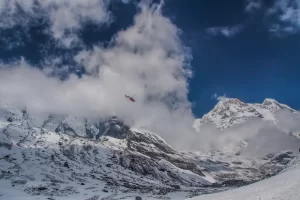
Helicopter flying in Annapurna
Comprehensive Packing List for Winter Trekking in Nepal
A well-planned packing list is crucial for ensuring a comfortable and safe winter trek in Nepal. It ensures you have all the essential gear and equipment to withstand the challenges of colder temperatures, snow-covered trails, and varying weather conditions.
Below is a comprehensive packing list for trekking in Nepal in the winter. Feel free to customize the list based on the specific trek, duration, and personal preferences.
Clothing
- Thermal tops and bottoms for base layers
- Long and short-sleeved t-shirts
- Fleece-lined pants
- Insulated fleece jackets
- Waterproof and windproof pants
- Down or synthetic-filled insulated layers
- Down jacket for outer layers
- Moisture-wicking socks
- Waterproof and insulated gloves
- Warm hat and neck gaiter
- Insulated and waterproof hiking boots
- Gaiters (for deeper snow conditions)
- Sports bras and moisture-wicking underwear
- Quick-dry trekking skirts or pants
Gear and Equipment
- A cold-rated sleeping bag
- Trekking poles for stability
- Headlamp with extra batteries
- Sunglasses with UV protection
- Sunscreen and lip balm with high SPF
- Portable water purification system
Accessories
- Backpack with rain cover
- Duffer bag for porters (provided by Heaven Himalaya)
- Trekking Map (provided by Heaven Himalaya)
- First aid kit, including altitude sickness medication
- Personal toiletries
Electronics
- Camera with extra batteries
- Portable power bank
- Travel adapters and chargers
- GPS device or smartphone with trekking apps
Documents and Money
- Passport and visa
- Travel insurance documents
- Emergency contact information
- Trekking permits (particular trekking region)
- Nepali currency (rupees)
Miscellaneous
- Lightweight and quick-dry towel
- Tissue or wet wipes
- Hand sanitizer
- Compact and quick-dry travel towel
Why is Heaven Himalaya the right choice for every winter trek?
Local Expertise
We are a local trekking company that has been operating in Nepal for several years. We have a team of experienced and knowledgeable local guides who know the region well and can provide valuable insights into the local culture and traditions.
Safety
Winter treks in Nepal can be challenging and require proper planning and precautions. We are committed to ensuring the safety and well-being of our clients and take all necessary precautions to ensure a safe and enjoyable trekking experience.
Responsible Tourism
We are committed to responsible tourism and work closely with local communities to ensure that our treks have minimal impact on the environment and contribute to the local economy to a greater extent.
Personalized Services
We treat client tours as if they were our own! We offer personalized service to our clients, considering their needs and preferences. We customize the itinerary and provide personalized attention to ensure a memorable trekking experience in Nepal.
Final Words,
Choosing a winter trek in Nepal is a beautiful escape to explore the Himalayas in their purest, most serene form.
Winter is the best time to explore the lower trekking trails in Nepal, surrounded by pristine snow-capped peaks and blue, crystal-clear skies.
It’s an opportunity to enjoy the tranquility of the mountains, witness unparalleled natural beauty, make genuine local connections, and experience a thrill of adventure amid the snow-covered wilderness.
Thus, a winter trek in Nepal is not just a trek; it’s a transformative journey that will imprint the majesty of the Himalayas deep into your body and soul.
Winter Trekking FAQs
Is it safe to trek in Nepal in the winter?
Yes, it is safe to trek in Nepal in the winter with proper precautions. To ensure safety, trek with experienced local guides, choose a registered trekking agency, opt for suitable trekking destinations, and pack the necessary gear and equipment.
Can I trek alone during the winter in Nepal?
You cannot trek alone in Nepal. As of April 1, 2023, solo trekking is banned in Nepal for safety reasons.
The Nepal Tourism Board has implemented this restriction, mandating trekkers to undertake their journeys with a local trekking agency and a government-registered guide.
Do I need a guide for winter treks in Nepal?
While it’s not mandatory, hiring a guide for winter treks in Nepal is highly recommended. Experienced local guides can assist you in navigating snow-covered trekking paths, make advance accommodations bookings, and provide valuable insights and support throughout the trek. Their knowledge of the trekking route and weather conditions can enhance your safety and overall trekking experience.
What do you wear on a winter trek?
For a winter trek in Nepal, it’s important to dress in layers. Start with moisture-wicking base layers, add insulating layers like fleece or down jackets for warmth, and cover the outer layers with waterproof and windproof materials.
Additionally, get insulated gloves, a warm hat, and waterproof boots to combat the cold and snowy conditions.
What is the best season for trekking in Nepal?
The best seasons for trekking in Nepal are spring (March to May) and autumn (September to November). The weather is ideal this time of year, and the mountain vistas are mesmerizing. The weather is absolutely pleasant, making it an ideal time for hiking. The sky is mostly clear and the sights are spectacular.
How do you stay warm on winter treks?
Here are some of the best ways to beat the cold on winter treks in Nepal:
- Layer your clothing
- Choose synthetic or woolen clothing
- Stay hydrated and eat a balanced diet
- Drink hot beverages like tea, soups, and hot lemon water
- Ensure enough sleep
Is December a good time to trek in Nepal?
Yes, December is a good time to trek in Nepal, especially in the low-altitude trekking region of Nepal. The snow-covered landscapes add a magical touch, turning the trekking routes into a winter wonderland.
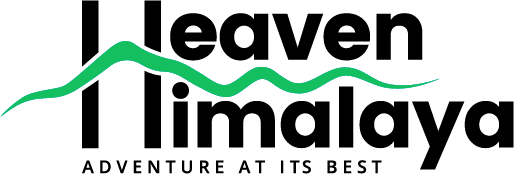
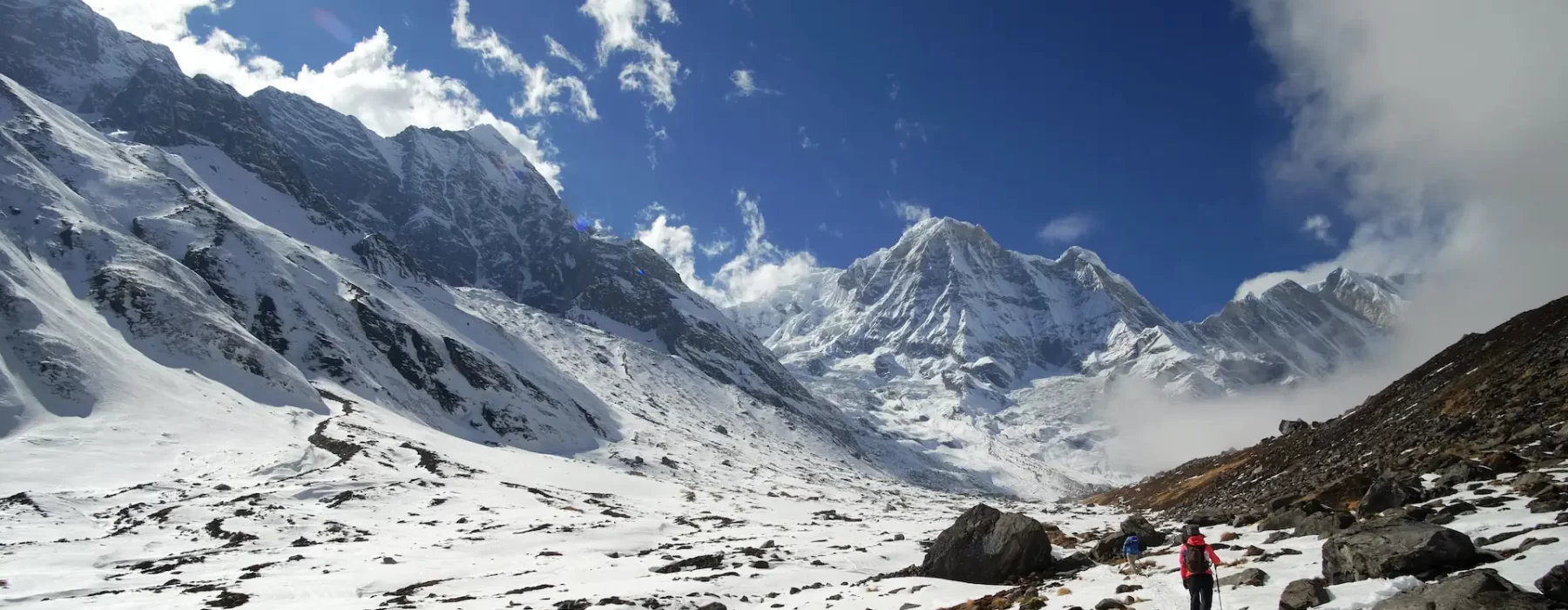
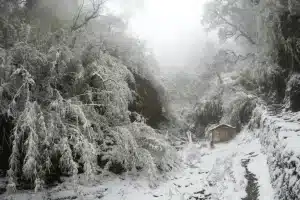
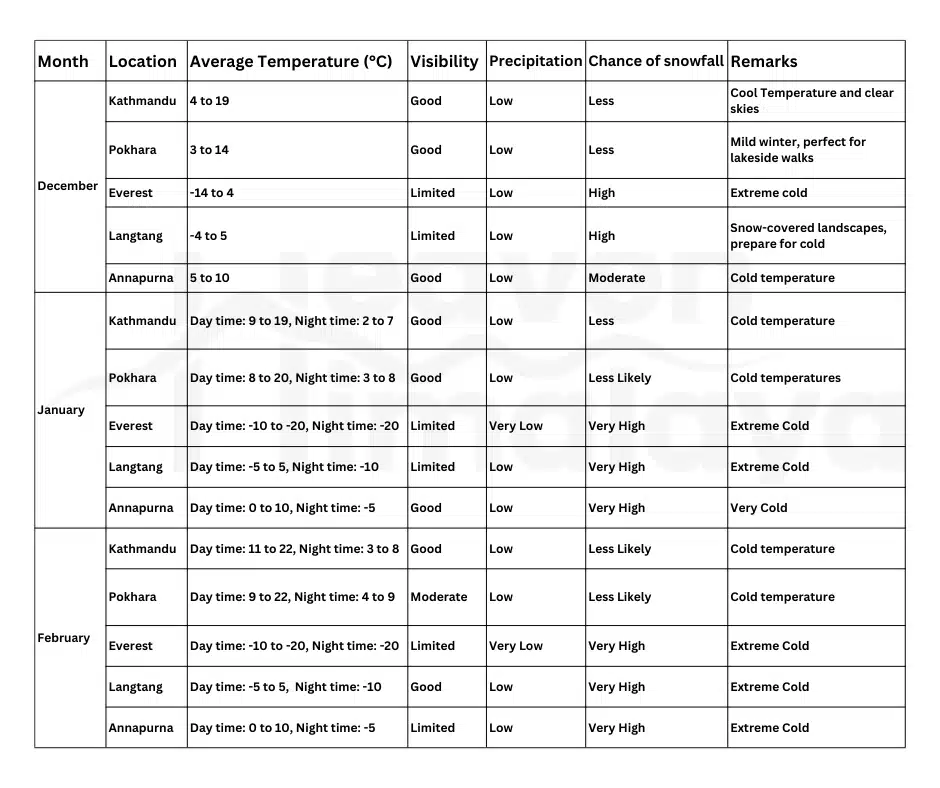

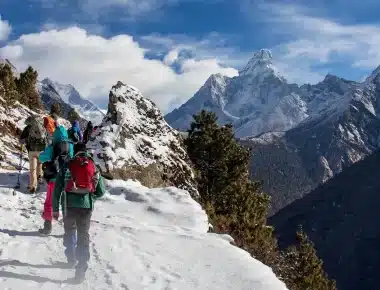
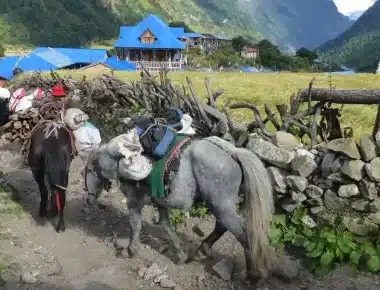
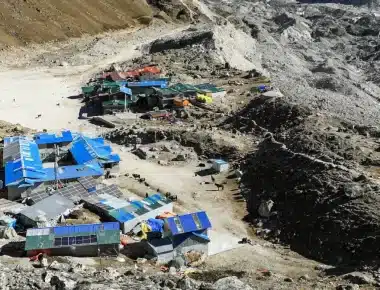
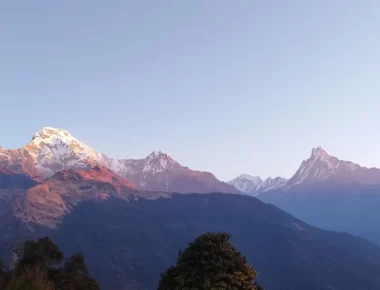

0 Comments